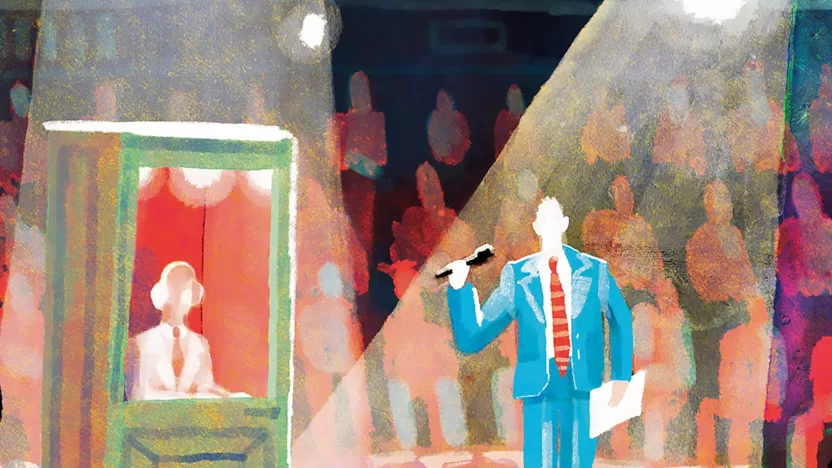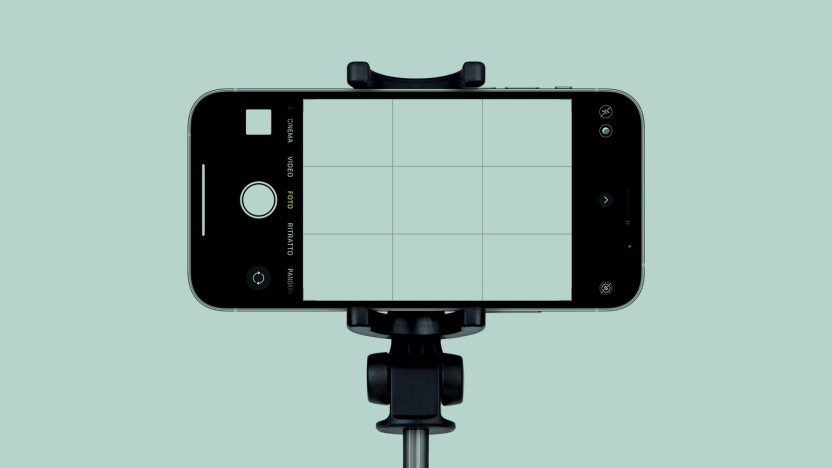The algorithmic boredom
Why, in the age of Netflix, we need to rekindle our curiosity about content.
by Armando Trivellini

It now seems to have become a matter of fact, something almost obvious. For the last ten years or so, we have been stalked by something that is supposed to resemble us, that follows us everywhere, deep within the wrinkles of whatever we do, and in the cultural or commercial offers we run into. It is the assessment of an algorithm that defines—at times striking the target, at others completely missing the mark—suggested content based on what we have used, read, watched, or listened to in the past. The problem lies in the theoretical notion of “calculability,” which underlies all algorithms: a problem can be solved if it can be calculated. If it is possible to calculate how close an offer can come to our liking, then the problem of being able to sell us a certain product is solved. Otherwise, things get complicated. Over the years, people have tried to come up with the perfect formula for creating successful products, but without human intuition, no algorithm has ever been good enough.
We discussed this with Andrea Scrosati, the Group Chief Operating Officer of Fremantle, a global giant—with offices in 31 territories—in entertainment content production and distribution, which produces an average of 50 shows a year, including series, films, and TV formats, for revenues of 1.8 billion euros. “The entertainment industry is constantly trying to convince itself that there is some scientific method to predict the success of a show or a movie,” he observes. “When I was at Sky, I can’t even count the number of times someone came into my office and said, ‘We need to apply this new miracle method.’ The problem is that none of them worked, or rather, they simply suggested the lowest common multiple, in other words, the ultimate platitude. If such a method really existed, groups like Disney, Comcast, Warner, and AT&T, who risk billions on their content, would have been using it for decades. Every year projects considered ‘certain’ turn out to be disasters at the box office or in the ratings. Conversely, ideas considered fragile or not very ‘in line’ with market trends turn out to be resounding successes. And if we consider films, series, or programs that have really made history, almost all of them fall into the latter category, from Star Wars onwards. Of course, the experience, taste, and sensibility of those who create content, and the marketing and promotion, are the key factors that determine their success, the factors we need to invest in, with a long-term vision.”
The “it can’t work” preconception is constantly disproved by a market that is always seeking new and universal things, even from local settings. And now that subtitles and dubbing—increasingly present even in America—have overcome the language barrier, stories from every corner of the world can be accessed and enjoyed by billions of viewers scattered everywhere. “When I decided to commission Gomorra, I was told that a series in Neapolitan dialect would not only not be marketable abroad, but not even outside of Naples—notes Scrosati—and that there had already been a film and a book. The same thing happened with X-Factor on Sky, because it was said that such a format needed the audience of a generalist TV channel”. For the record, Gomorra is the Italian TV series that has sold the most abroad, while X-Factor continues to be one of Sky’s main assets.
The point is that the human content conveyed by film, series, and TV shows can be experienced everywhere. As symbolic animals, human beings experience and process this content together with millions of other fellow humans, probing common roots to try to make sense of it. But is the so-called “human” proposition still relevant? Is there still room for a form of curatorship that helps viewers discover hidden or new content, far from the dictatorship of proximity algorithms? Scrosati has no doubts: “Of course there is room, and it is fundamental: one of the most beautiful aspects of a cultural product is when it amazes you. What’s more, amazement is also commercially valuable: if you don’t surprise your audience with something unexpected, at a certain point, they will stop being interested in your product, they will no longer get a kick out of it. The algorithms that suggest what to watch definitely generate a high volume of hits on the initial viewing, but sometimes they only last a few minutes. Then, if a viewer doesn’t like the product, they leave. The satisfaction that we all get from discovering something that positively surprises us is a hundred times stronger than that of a mere confirmation of our preferences.”
At this point, the risk is that of feeling a bit nostalgic. If there was one good thing, in the era of generalist TV, it was coming home tired and sinking into the couch with the remote control, discovering with amazement a documentary on Stonehenge, the eccentric character of a talk show or a film by Ingmar Bergman, all things that no one would ever choose on their own to watch. We would accidentally stumble on something we would later grow to love. Scrosati, however, immediately dismisses any nostalgic relapse: “I am against criticizing the outcome of an innovation process. That’s because I think that the strength of human nature lies precisely in our constant ability to evolve and innovate,—he explains—and in the media sector, the audience’s behavior will never be the same again. On-demand has a great advantage: it allows you to access a huge potential variety of content, whenever and however you want. Compared to linear TV, it gives a sense of freedom, although it is a freedom that may be apparent: because there is always a process that guides the suggestion we receive.”
“The question we must ask ourselves is: if you have a catalog with a million pieces of content available, are you really free? I believe it depends on us more than on the algorithm”, Scrosati points out. “If you are a person who keeps up to date, who reads, who discusses things with friends and colleagues, and who travels, then I definitely think so. I’m constantly discovering content that amazes me. A recent example is a Brazilian documentary, Killer Ratings. It’s an incredible story about a journalist from Manaus who had a talk show and who paid for crimes so that he could be the first to get his cameras to the scene. A true story. Someone had suggested it to me, I had read about it, and I went and found it by digging deep into Netflix’s catalog. Of course, if you’re not curious enough, and don’t engage with the outside world, then objectively, you may have a more passive and less free approach. But this is true for everything, not just for on-demand content catalogs.”
So what’s the right way to deliver a creative content proposition in the digital world? “I think the biggest mistake you can make from the point of view of the creative process is to try to preemptively make something “tailored” to a specific tool, software, or distributor. There has been a lot of talk in recent years about vertical integration, which is the fact that large groups are buying production houses directly, or contracting creatives. In the independent production industry, this process is viewed with concern because you will never be able to compete with the checks that Amazon or Netflix can write. However, I’m not as worried because I think that model is structurally flawed. The only way you can make something creatively extraordinary is if the creative process is truly free, and that can’t happen when you have to work within the boundaries set by the type of distribution medium, and its sales and marketing policies. The process has to start from the idea: once it’s developed and defined, then you can find its most suitable home.”
To navigate the endless supply of online content, you need a key. It’s critical to get informed, to find new and stimulating topics. Instead, waiting for the algorithm to suggest something can be very limiting. One wonders if all this enormous offer won’t lead us sooner or later to some form of saturation. “In the short term, I don’t think so,” Scrosati notes, “If anything, the opposite is true. The pandemic has, in fact, generated two contingent situations: the first is the multiplication of direct-to-consumer platforms, people have stayed home, their numbers have skyrocketed. The perfect example is Disney+: launched less than a year ago, it has already shot past 100 million subscribers; at the same time, it has burned content at a very high rate. The second is that for several months, production was a challenge due to lockdowns. Therefore, fewer original series and movies were delivered in 2020. That makes for strong demand for new original content that will last for at least another 24 months. Then we’ll have to see whether consumers are willing to subscribe to so many different content packages.”
There is actually a lot of confusion now. While we wait for the cinemas to reopen at full capacity, in Italy alone we have digital terrestrial, Rai, Mediaset, Sky (with third party channels), Amazon, Netflix, Disney, Nexus+, Mubi, Apple TV, YouTube, Tim Vision and many other platforms scattered throughout the world. “No one is going to want ten subscriptions—Scrosati continues—I think we will see a reverse cycle where the key players will be the ‘aggregators’ that offer consumers a single payment that includes all or many platforms such as Apple, Disney+, Netflix, etc. Technology currently enables this aggregation via software without requiring a physical object, which makes the model much more financially sustainable. What Sky is doing today with SkyQ is perhaps the last example of an aggregator using a device and not an app. A good example is how Roku developed in the US. It started as a box and a pen drive and is now increasingly integrated into smart TVs with an app. Basically, it is a throwback to the past with a completely different technology. In that scenario, it will be interesting to see what happens to players who choose to remain independent of these aggregators. We will find out over the coming decade. Increasingly, platforms will work with revenue sharing, with AVOD models, whereby content producers can reach audiences directly, making a profit from advertising. Again, a model that harkens back to the past but is delivered in a profoundly innovative way.”
What about cinema? What will be the future of movie theaters? Andrea Scrosati is sure of his answer: “I see a positive future but, as in everything, we must have the courage to change. Cinema is an experience. Even before the pandemic, operators made a huge mistake by totally closing their doors to any change to the so-called “windows” model, when they could do so from a very advantageous standpoint. For decades, movies were first released in theaters, then three months later on videotape, then seven months later on pay-per-view, then nine months later on pay TV, and still later on free-to-air television. This model was based on a market that had no longer existed for years and was completely outdated. There was, for example, the issue of piracy, but really the whole value chain was compromised. When in 2016 we created Vision, a film distribution company in Italy, with some partners, we proposed to some operators to shorten the windows as an experiment. After three weeks, we would offer the film on pay-per-view at €19, sharing that value with them. They refused. Shortly after that, Amazon and Netflix entered the original movie market. With their power, they showed movies like Manchester by the Sea and Rome in theaters for a few days and then immediately put them on their platforms. They also won Oscars… and so the window system collapsed overnight. Then the pandemic did the rest, and now consumers expect to have movies that are in theaters (or should be in theaters) available at home. The future will be based on different consumption patterns.”
Differentiated movie theaters, with differentiated offerings: some customers will prefer dining in the theater, others will be able to make exclusive reservations for themselves and their friends. “And then the large theaters, where the sensory experience is something that cannot be replicated at home, and those for independent cinema, perhaps with slightly more comfortable seats,” concludes Scrosati.
The future of cultural proposals, therefore, lies in differentiating offerings and in the ability of individuals to seek out new content. The world is much bigger than an algorithm. The universe is made up of galaxies that we will never be able to explore unless we venture into the unknown with avid curiosity and let ourselves be conquered by a journey of discovery that we cannot simply imagine passively, motionless on the warm couches of our homes. To be free, we must continue to let ourselves be surprised.


